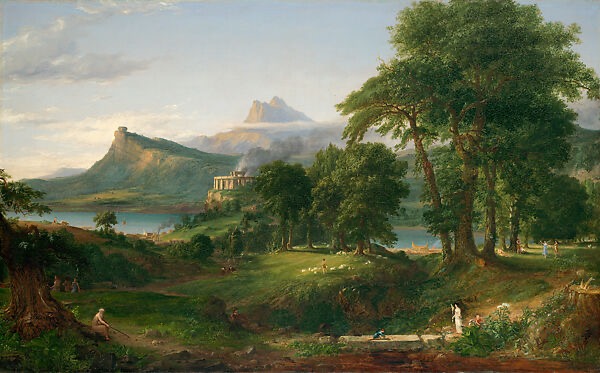#Discovering #Biedermeier #Artists #Style
In this blog post, we’ll delve into the classic elements and characteristics of Biedermeier paintings, explore how it differs from other art movements, and introduce you to several notable artists from the Biedermeier movement and their iconic works.
Biedermeier style, an early 19th-century Central European art and design movement, emerged as a reaction to the grandeur of the preceding Neoclassical and Romantic styles. Rooted in the values of simplicity, domesticity, and the celebration of everyday life, the Biedermeier art style provided a departure from the ornate and opulent styles of the past.
Six Characteristics of Biedermeier Art
- Simplicity and Elegance: Biedermeier paintings are committed to simplicity and elegance. It emphasizes modesty and the celebration of everyday life, in contrast to the grandeur of Neoclassicism and Romanticism.
- Domestic Scenes: Biedermeier artists portrayed scenes from domestic life, including interiors, family gatherings, and leisure activities. These artworks reflected the values and experiences of the emerging middle class.
- Attention to Detail: Biedermeier artists paid meticulous attention to detail. The paintings showcase precise rendering of objects, textures, and the intricate patterns of the period’s furniture and interiors.
- Naturalism: Additionally, Biedermeier pieces lean towards naturalism, aiming for realistic and true-to-life representations of subjects. This naturalistic approach created an intimate connection between the viewer and the artwork.
- Use of Light: Additionally, light and shadows create depth and three-dimensionality in Biedermeier paintings. This technique added a sense of realism to the scenes.
- Societal and Political Themes: While primarily focused on the domestic sphere, Biedermeier work occasionally delved into societal and political themes, such as depictions of public spaces, urban scenes, and social commentary.
Biedermeier vs. Other Art Styles
To understand art of the Biedermeier period better, it’s essential to compare and contrast it with other art styles of the time.
Biedermeier vs. Neoclassicism: Neoclassical art is characterized by its idealized and heroic representations, often drawing inspiration from classical antiquity. Biedermeier, on the other hand, shied away from grandeur and embraced the ordinary. Neoclassical artists celebrated historical or mythological narratives, however, Biedermeier artists found beauty in the simplicity of day to day life.
Biedermeier vs. Romanticism: Romantic art was marked by its emotional and passionate expressions, often featuring dramatic landscapes and intense personal experiences. In contrast, Biedermeier art preferred a calmer, more restrained approach, emphasizing the rational and ordered aspects of existence.
Biedermeier vs. Realism: Biedermeier style shares some similarities with Realism, which emerged later in the 19th century. Both styles aimed for realistic depictions of everyday life. However, Biedermeier work retained a certain romanticized charm and idealization, while Realism sought unvarnished truth.
Notable Biedermeier Artists and Their Works
Carl Spitzweg (1808-1885): “The Bookworm” (1850)
Carl Spitzweg is perhaps the most celebrated Biedermeier artist. His work “The Bookworm” encapsulates the essence of Biedermeier’s style. The painting portrays a man reading, surrounded by books in a modest, cluttered room.
The attention to detail in the room’s decor and the character’s expressions make this work a quintessential example of Biedermeier’s simplicity and love for literature. Additionally, Spitzweg’s style combines humor and observation, and his works often feature whimsical, everyday characters and scenes.
Further, his detailed approach to painting gives his pieces a lifelike quality, making them accessible and relatable to viewers. The painting is now on permanent loan to the Grohmann Museum in Milwaukee.
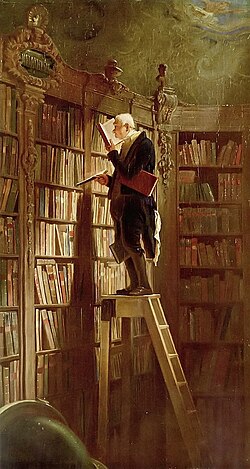
Eduard Gärtner (1801-1877): “Parochialstrasse in Berlin” (1831)
Eduard Gärtner is a prolific Biedermeier artist, with one of his most well-known pieces being “Parochialstrasse in Berlin.” It has a captivating and closely detailed cityscape that provides a glimpse into the mid-19th-century urban life of Berlin. The painting showcases the artist’s remarkable skill in architectural representation and his keen observation of light and shadow.
“Parochialstrasse in Berlin” is a masterful Biedermeier painting. It is an example of Gärtner’s ability to capture the essence of a bustling city street. The scene portrays the charming and harmonious coexistence of historical buildings and daily life. Further, it shows pedestrians strolling along the sidewalk and horse-drawn carriages navigating the cobbled streets.
The interplay of sunlight on the facades and the intricate architectural details highlights Gärtner’s commitment to portraying the vibrant and realistic atmosphere of the city, making this work a significant contribution to the genre of urban cityscapes during the Biedermeier era. The piece is on display at the Met Museum in NYC.
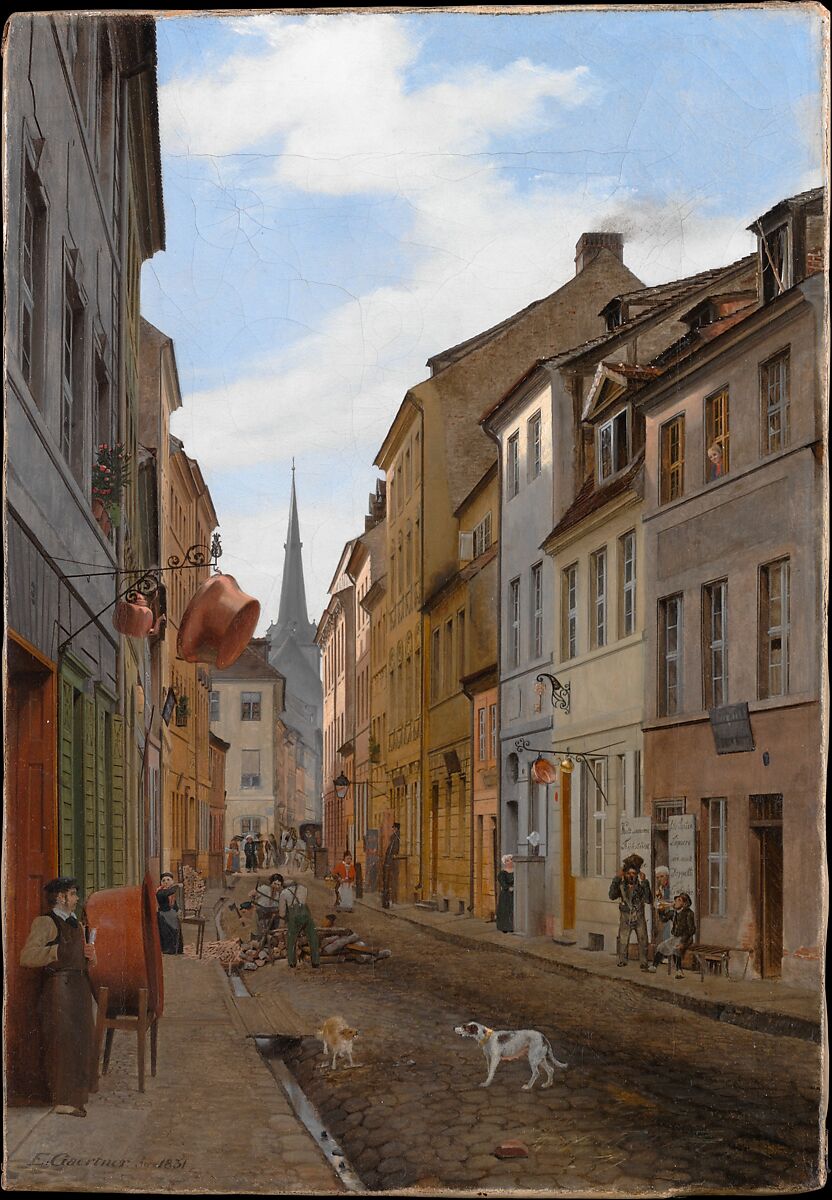

Friedrich Amerling (1803-1887): “The Young Eastern Woman” (1838)
Friedrich Amerling, an Austrian painter of the Biedermeier era, is known for his exceptional portraiture. His work often shows a deep understanding of human expression and an acute eye for detail. Amerling’s portraits exude a sense of intimacy and depth, capturing the personalities and emotions of his subjects. His mastery of technique and ability to convey the character and individuality of his sitters set his portraiture apart.
His contributions to the Biedermeier art movement have left an indelible mark on the genre of portraiture and are celebrated for their realism and emotional depth. Although the artist provocatively titled this painting Young Eastern Woman, it is obvious that the model is not Asian, but merely wears a Turkish costume. The rich fabrics and glowing light create a rich atmosphere, thus showing the Western fascination with Asian images and themes. You can find this piece on display at the Cleveland Museum of Art.
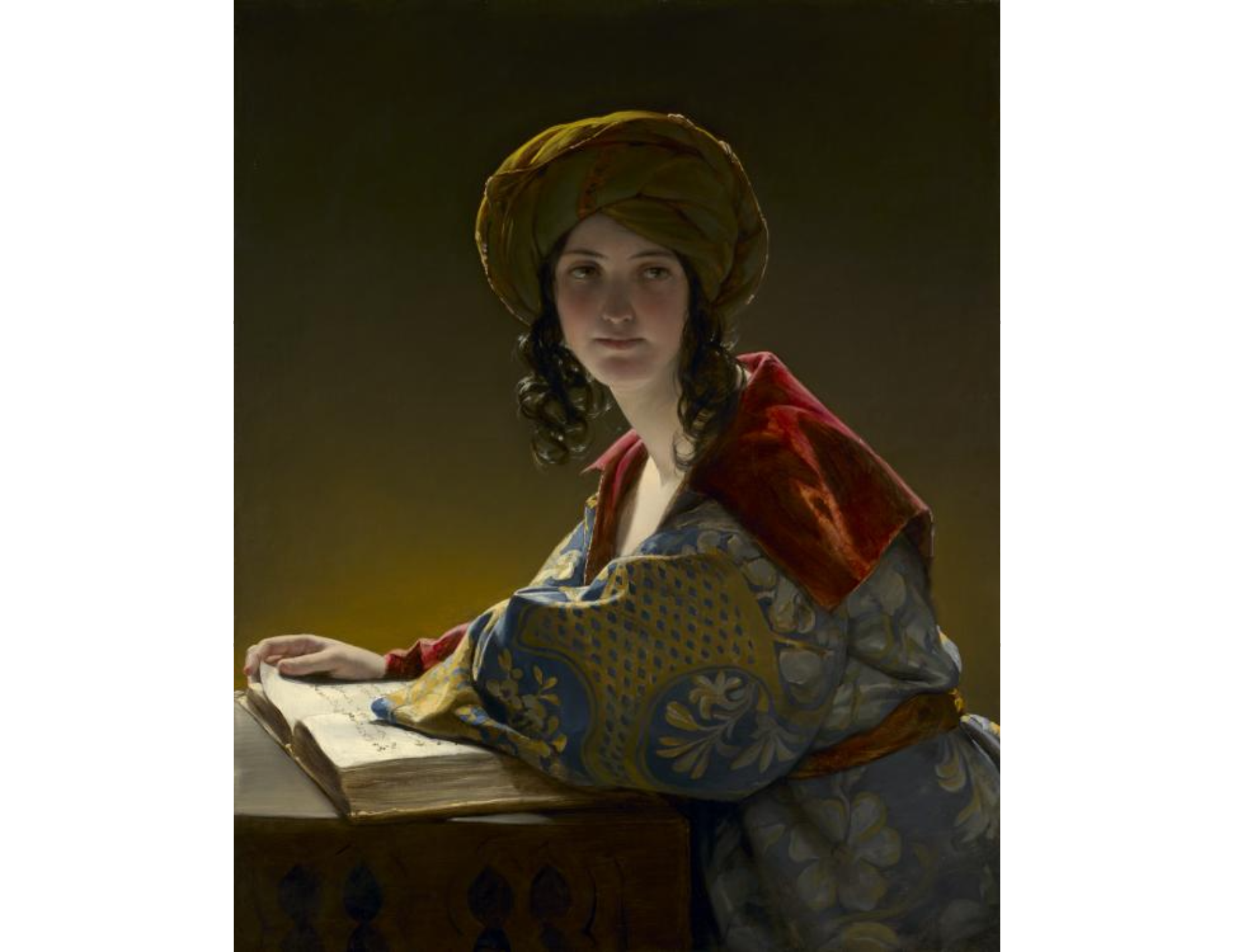

Moritz von Schwind (1804-1871): “The Rose” ( 1839)
Moritz von Schwind was a Biedermeier artist famous for his whimsical and fairy tale-inspired works. Schwind’s playful approach to telling stories and his charming characters make his work highly engaging. For example, the Rose has an enchanting and fairytale inspired narrative, portraying a young woman surrounded by vibrant roses in a lush garden.
As the lady engages with the roses, her enchantment and the lively, almost magical quality of the scene transport the viewer into a world of fantasy.
Moritz von Schwind’s ability to infuse everyday scenes with a touch of enchantment and his attention to intricate details make “The Rose” a captivating representation of his distinct artistic style. This piece is on permanent display in Berlin at Alte Nationalgalerie.
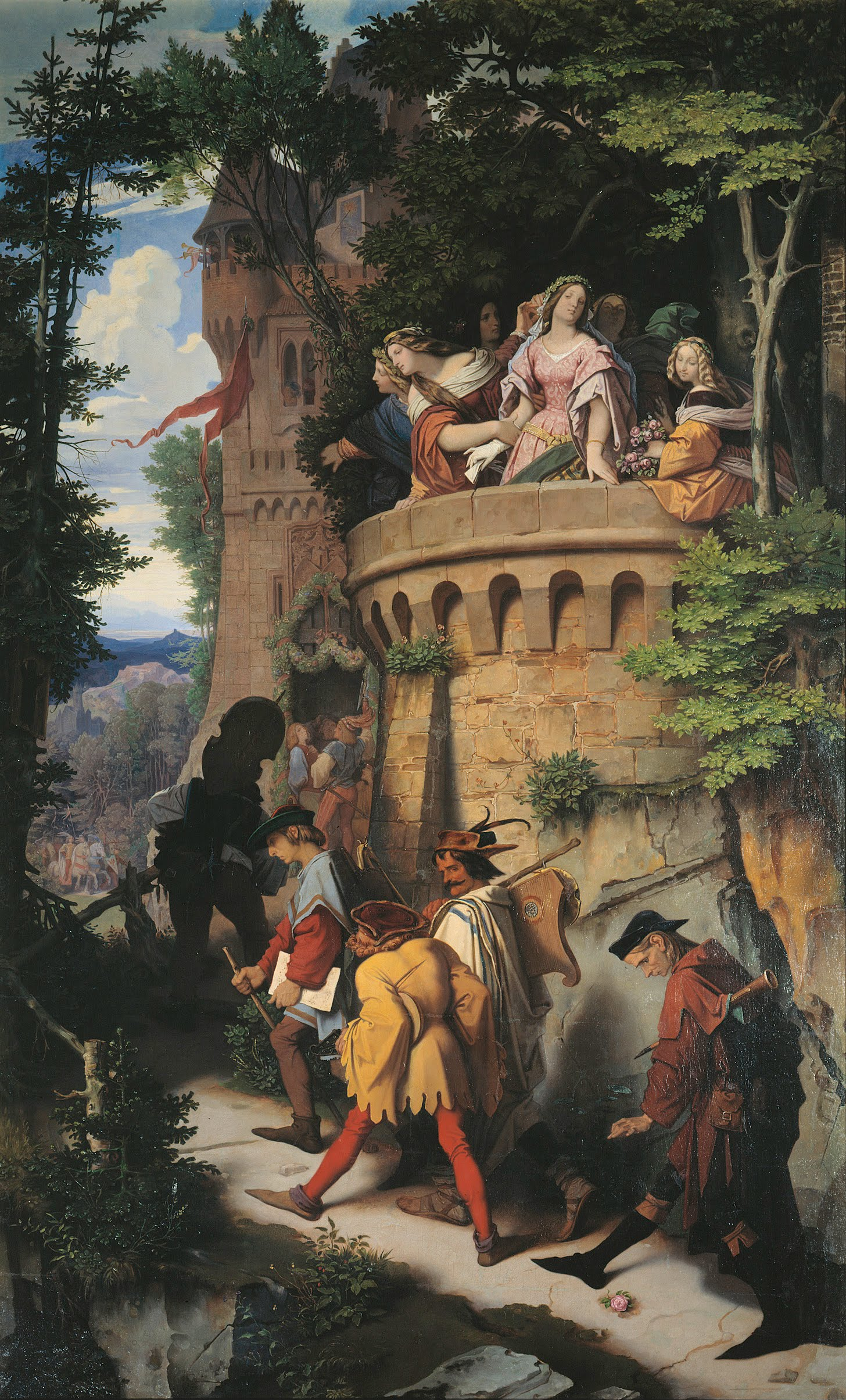

Biedermeier Artwork Living on Today
Notable artists during the Biedermeier period such as Spitzweg, Amerling, Waldmüller, Gaertner, and von Schwind each brought their unique style and techniques to this movement. Whether through humorous genre scenes, detailed portraits, architectural cityscapes, or whimsical storytelling, these artists made a mark on the Biedermeier period.
Thus, in a world enamored with grandeur and drama, Biedermeier architecture, art and furniture reminds us that beauty can be found in the simplicity of every day life.


